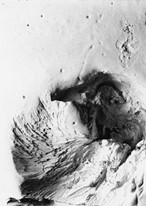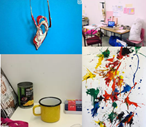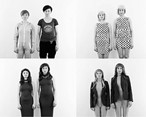BDes (Hons) Sound for the Moving Image is a two year degree programme, which has been running since 2018. Applications are welcomed from students entering directly into year 3, with articulation from HND programmes at college, or from mature students with relevant experience. The programme creates a learning environment for students to develop their conceptual and technical skills in sound for the moving image.
Students begin by recording and constructing soundscapes, then branch out to create original documentary/abstract/narrative film, eventually building interactive audio-visual installations. The fundamentals are taught in Year 3 (stereo sound production, fixed frame video, and interactive systems) before embarking on more complex practices in Year 4 (such as multi-channel spatial audio, 360 film, music for picture, as well as self-directed projects in the student’s chosen medium).
The studios in our department allow students to make their stamp on the film, broadcast and game industries – but also the art world. That means that we share key pedagogical approaches across the art school. We all emphasise collective studio practice with connected, active learning - spotlighting practitioner role models from art and science. We use state of the art interactive learning technologies such as Miro and Padlet – so that our lecturers deliver their expertise, and students can reply in their chosen format (such as text replies, sharing media, and class discussion). Students and staff share their insights from their own worldview, so students build a creative practice that is informed by their cultural experience.
This stems from Glasgow’s identity as a welcoming, diverse and vibrant city with an incredible cultural ecology. Glasgow is known for iconic art festivals, opera, music, ballet – in addition, the media landscape (film, TV, games) has grown exponentially, as Glasgow and the Highlands have become prime recording locations. Connections to the creative community are embedded into the curriculum, as critical research skills are enhanced by workshops in prolific city archives, class visits to art galleries, and interaction with the Royal Conservatoire of Scotland.
We work at the intersection of creative experimentation and scientific discovery. For example, the Ambisonic soundlab (shared with ARUP) is used for acoustic modelling of architectural spaces, scientific research of sound and emotion, and our students’ sculpting of synthetic soundfields for imagined environments.
Cross-school collaboration is encouraged, from our continuous GSA-wide Discord forum “Sonic_GSA”, to BDes Sound students acting as acoustic consultants in a BDes Interior Design project. When devising interactive audio-visual installation, the BDes Sound for Moving Image cohort joins the BSc Immersive Systems students.
Throughout the School of Innovation and Technology there is a commitment to Equality Diversity and Inclusion. For the BDes sound, we value consultation from leaders of gender equality in sound education. We invite groundbreaking practitioners to share their approaches with our students, and in a public outreach. Accessibility is prioritised, with consistent learning support, where staff cater for the individual needs of students with neurodiversity or a disability – for example, captions and transcripts are used, and student presentations are supported and relaxed (or can even be pre-recorded). Further, accessibility and ethics are often explored in the curriculum, as students are encouraged to make their work representative of (and accessible to) a diverse audience. Students feel confident to share their responses to lecture delivery as a group, with bespoke preparation materials – accessing a menu of text-to-speech enabled reading material (from which they can choose), media clips, and even pre-recorded lectures when appropriate.
On the BDes Sound for Moving Image course, students will build a unique portfolio to showcase their creativity, and their professional practice in sound for moving image – to launch their career in film, television, interactive media (such as video games or web development), immersive audio, art installation. Find out more at the class of 2021’s Graduate Showcase.
You can meet some of the Graduates here and here.
Follow us on Twitter / Facebook











